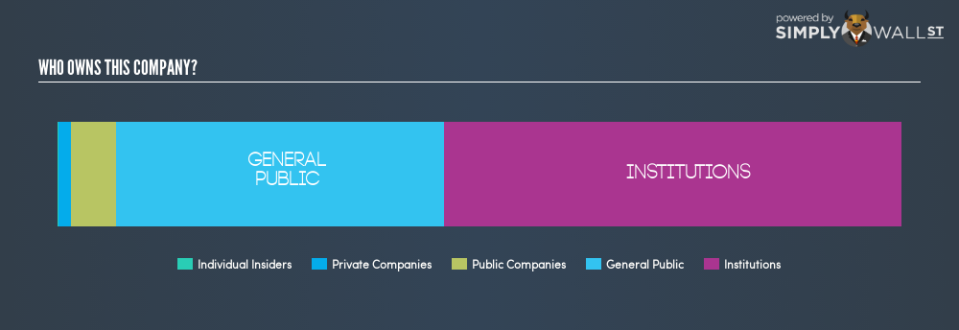Why Primary Health Care Limited’s (ASX:PRY) Ownership Structure Is Important

I am going to take a deep dive into Primary Health Care Limited’s (ASX:PRY) most recent ownership structure, not a frequent subject of discussion among individual investors. Ownership structure has been found to have an impact on shareholder returns in both short- and long-term. Since the effect of an active institutional investor with a similar ownership as a passive pension-fund can be vastly different on a company’s corporate governance and accountability of shareholders, investors should take a closer look at PRY’s shareholder registry.
View our latest analysis for Primary Health Care
Institutional Ownership
With an institutional ownership of 54.08%, PRY can face volatile stock price movements if institutions execute block trades on the open market, more so, when there are relatively small amounts of shares available on the market to trade Although PRY has a high institutional ownership, such stock moves, in the short-term, are more commonly linked to a particular type of active institutional investors – hedge funds. In the case of PRY, investors need not worry about such volatility considering active hedge funds don’t have a significant stake. However, we should dig deeper into PRY’s ownership structure and find out how other key ownership classes can affect its investment profile.
Insider Ownership
Insiders form a group of important ownership types as they manage the company’s operations and decide the best use of capital. Insider ownership has been linked to better alignment between management and shareholders. Although individuals in PRY hold only a minor stake, it’s a good sign for shareholders as the company’s executives and directors have their incentives directly linked to the company’s performance. In addition to this, it may be interesting to look at insider buying and selling activities. Keep in mind that buying may be sign of upbeat future expectations, but selling doesn’t necessarily mean the opposite as the insiders might just be doing it out of their personal financial needs.
General Public Ownership
A substantial ownership of 38.90% in PRY is held by the general public. This level of ownership gives retail investors the power to sway key policy decisions such as board composition, executive compensation, and potential acquisitions. This is a positive sign for an investor who wants to be involved in key decision-making of the company.
Private Company Ownership
Potential investors in PRY should also look at another important group of investors: private companies, with a stake of 1.41%, who are primarily invested because of strategic and capital gain interests. However, an ownership of this size may be relatively insignificant, meaning that these shareholders may not have the potential to influence PRY’s business strategy. Thus, investors not need worry too much about the consequences of these holdings.
Next Steps:
The company’s high institutional ownership makes margin of safety a very important consideration to existing investors since long bull and bear trends often emerge when these big-ticket investors see a change in long-term potential of the company. This will allow investors to reduce the impact of non-fundamental factors, such as volatile block trading impact on their portfolio value. However, ownership structure should not be the only focus of your research when constructing an investment thesis around PRY. Instead, you should be evaluating company-specific factors such as the intrinsic valuation, which is a key driver of Primary Health Care’s share price. I urge you to complete your research by taking a look at the following:
Future Outlook: What are well-informed industry analysts predicting for PRY’s future growth? Take a look at our free research report of analyst consensus for PRY’s outlook.
Past Track Record: Has PRY been consistently performing well irrespective of the ups and downs in the market? Go into more detail in the past performance analysis and take a look at the free visual representations of PRY’s historicals for more clarity.
Other High-Performing Stocks: Are there other stocks that provide better prospects with proven track records? Explore our free list of these great stocks here.
NB: Figures in this article are calculated using data from the last twelve months, which refer to the 12-month period ending on the last date of the month the financial statement is dated. This may not be consistent with full year annual report figures.
To help readers see past the short term volatility of the financial market, we aim to bring you a long-term focused research analysis purely driven by fundamental data. Note that our analysis does not factor in the latest price-sensitive company announcements.
The author is an independent contributor and at the time of publication had no position in the stocks mentioned. For errors that warrant correction please contact the editor at editorial-team@simplywallst.com.

 Yahoo Finance
Yahoo Finance 

